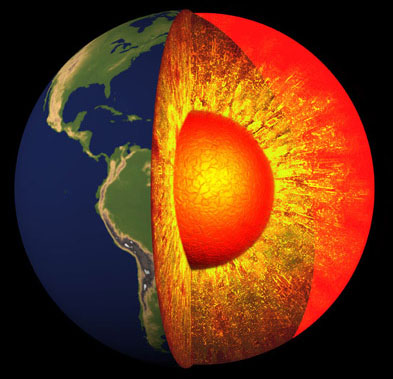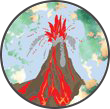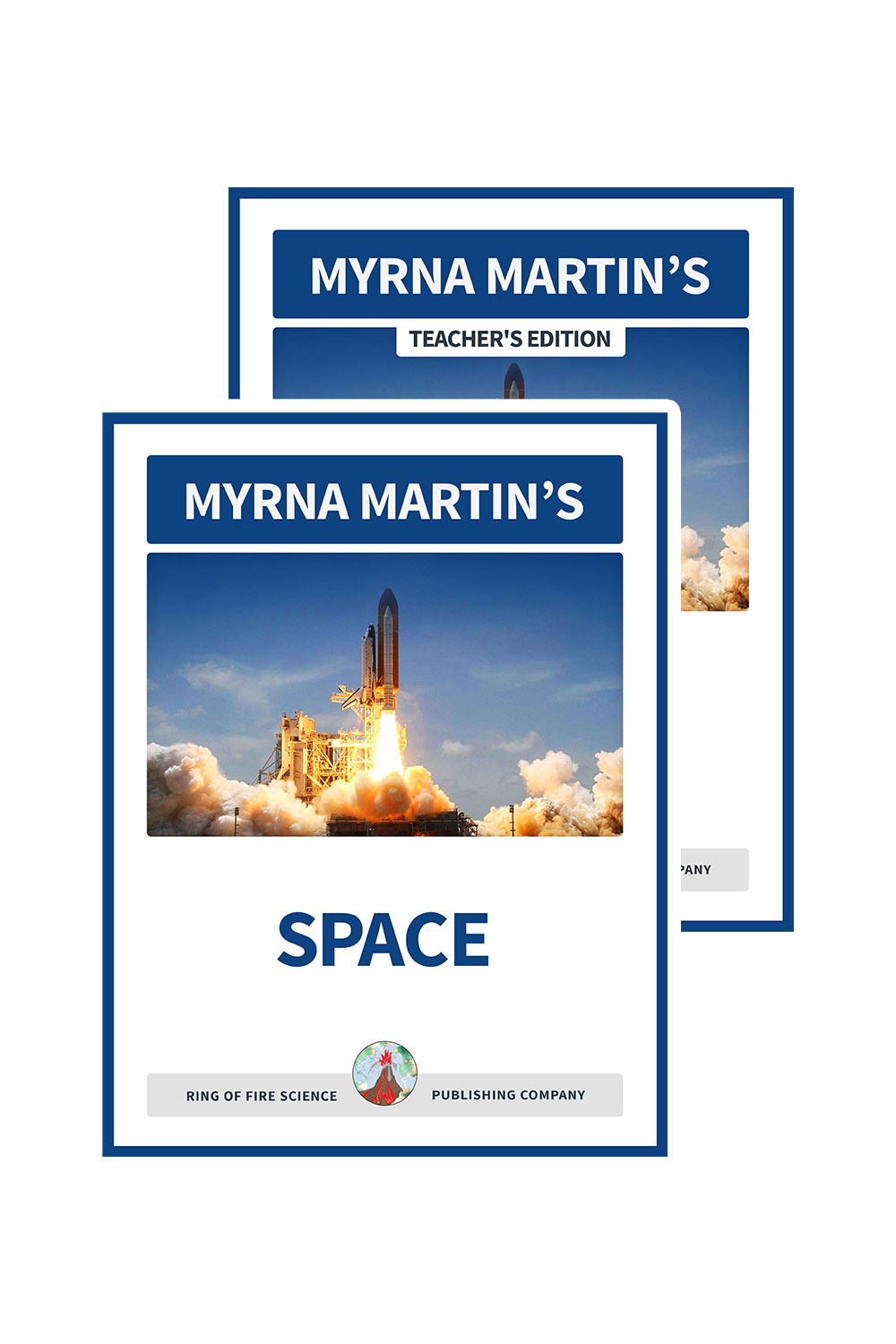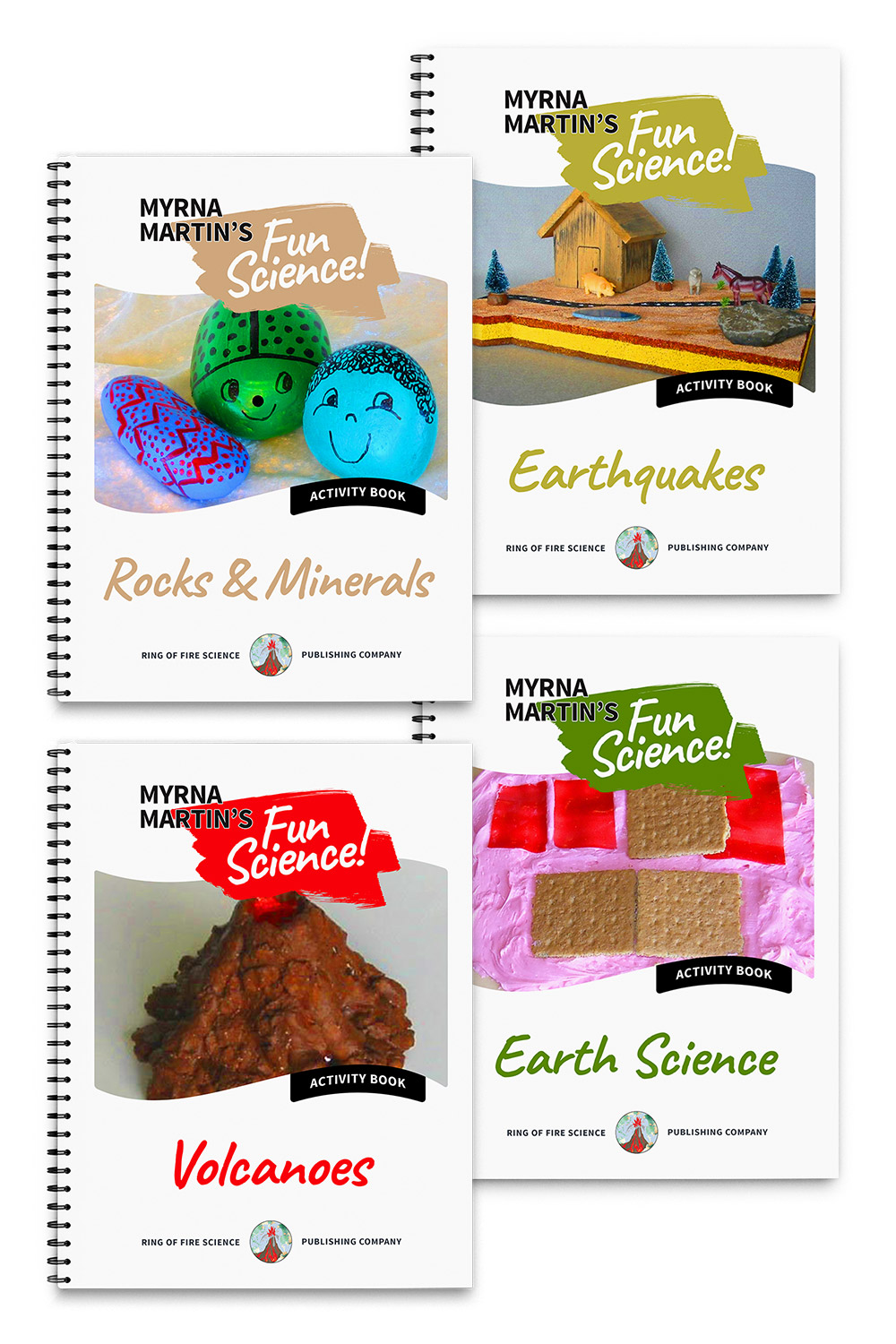Earths Interior has layers
Earths Interior has layers with three main sections
Three main sections of the Earths interior
Earths interior is divided into three main sections. The crust is the outer layer of the Earth and it is made of rigid rocks. The Earths mantle contains 84% of the planet's mass and lies beneath the crust. The Earths core lies in the center of our planet and contains 15% of its mass.

Earth's inner core layers
P waves and S waves are body waves
Surface waves
P waves and S waves are body waves because they travel through the body of the Earth. Love waves and Rayleigh waves are two types of surface waves that travel along the surface of the Earth after a large earthquake.
P waves are compression waves
Scientists study the interior of Earth with earthquake waves. Compression earthquake waves (P waves) move through all layers of the Earth. A change in density will deflect the waves. An increase in density of the rocks causes the P waves to speed up. Primary waves, P waves, travel through solids, liquids and gases.
S waves travel at slower speeds through the Earth
Secondary waves, S waves, travel through the Earth at a slower speed and are stopped when rocks melt. They travel only through solid rock. Beno Gutenberg used the fact that S waves stopped at the Earth's liquid core to determine the boundary between the mantle and the core. He discovered the mantle rocks were solid and the outer core is molten rock
the inner core Discovered
Mantle rocks are solid
Earthquake waves increase in speed as they travel through the mantle. The increased speed of the seismic waves proved that the mantle contains solid rocks.
Earth's outer core rocks are molten
S waves stopping at the boundary of the core proved the outer core was molten as the P waves continued their journey through the Earth but were deflected at the boundary.
Inge Lehmann using the speed of P waves through the Earth's core discovered the solid inner that has a radius of approximately 1220 km (760 miles).
Hot Metals in Earth's core
Inner core has extremely hot metals
Lying at the center of the Earth is a solid core of extremely hot metals. It is less dense than solid iron so scientists believe up to 10% of the core contains lighter elements. The scientists speculate it could be sulfur and oxygen that is easily dissolve into liquid iron at these pressures.
The inner core rocks vibrae like a solid
The pressure is so great that they do not flow like a liquid but vibrate like a solid. The outer core is extremely hot and the rocks melt at the boundary between the mantle and outer core. The outer core is believed to be primarily iron and nickel with a few trace elements. Earth's Magnetic Field is generated in this part of the Earth.
Earths inner core
Composition of the inner core
Scientists studying earths interior believe the inner core is 90% iron with the remaining 10% iron mixed with nickel, oxygen, sulfur or a combination of these elements.
The inner core is also suspended in the molten outer core and revolves slightly faster than the rest of the planet. Scientists also believe that the inner core could contain giant crystals that are lined up north to south.
More Planet Earth Links
Alaska Northern Lights Learn how and why the Northern Lights light up the sky in the Northern Hemisphere.
Earths Crust Find out where the newest crust on our planet forms and which type of crust is the oldest.
Lithosphere Earth's lithosphere is the outer shell of the planet. It contains both the crust and part of the upper mantle.
Earths Core Find out how scientists use earthquake waves to study the Earth's core.
Asthenosphere Find out how scientists proved the existence of the asthenosphere after the Great Chilean Earthquake in 1960.
Earths Interior Find out about layers that have formed inside out planet and how they were discovered.
Planet Earth Find out about the different layers that make up planet earth from the core to outer space.
Home Page The Science Site contains information on our planet, volcanoes, science activities, earthquakes and much more.
Kids Fun sCIENCE bOOKSTORE
Check out Myrna Martin's award winning textbooks, e-books, videos and rock sets. The Kids Fun Science Bookstore covers a wide range of earth science topics. Click here to browse.
Sign up to our monthly newsletter and receive our FREE eBook containing 3 fun activities that don’t appear in any of our other books!
The Kids Fun Science monthly newsletter will include the following: current events, weird and fantastic facts, a question of the month, science trivia and the latest new content from our website.
We respect your privacy and you can be assured that we will never share your email address or use it for any other purpose than to send you our newsletter.









